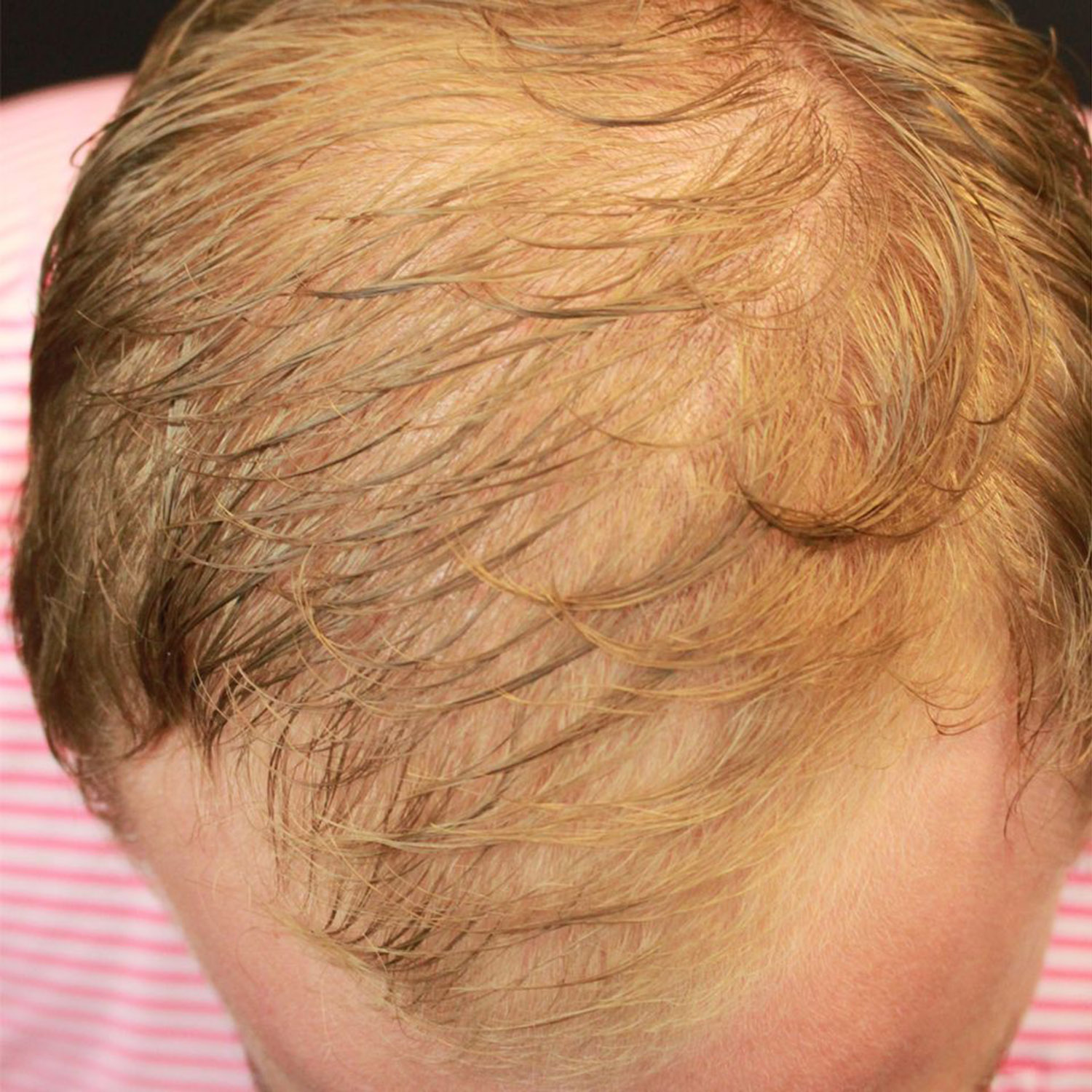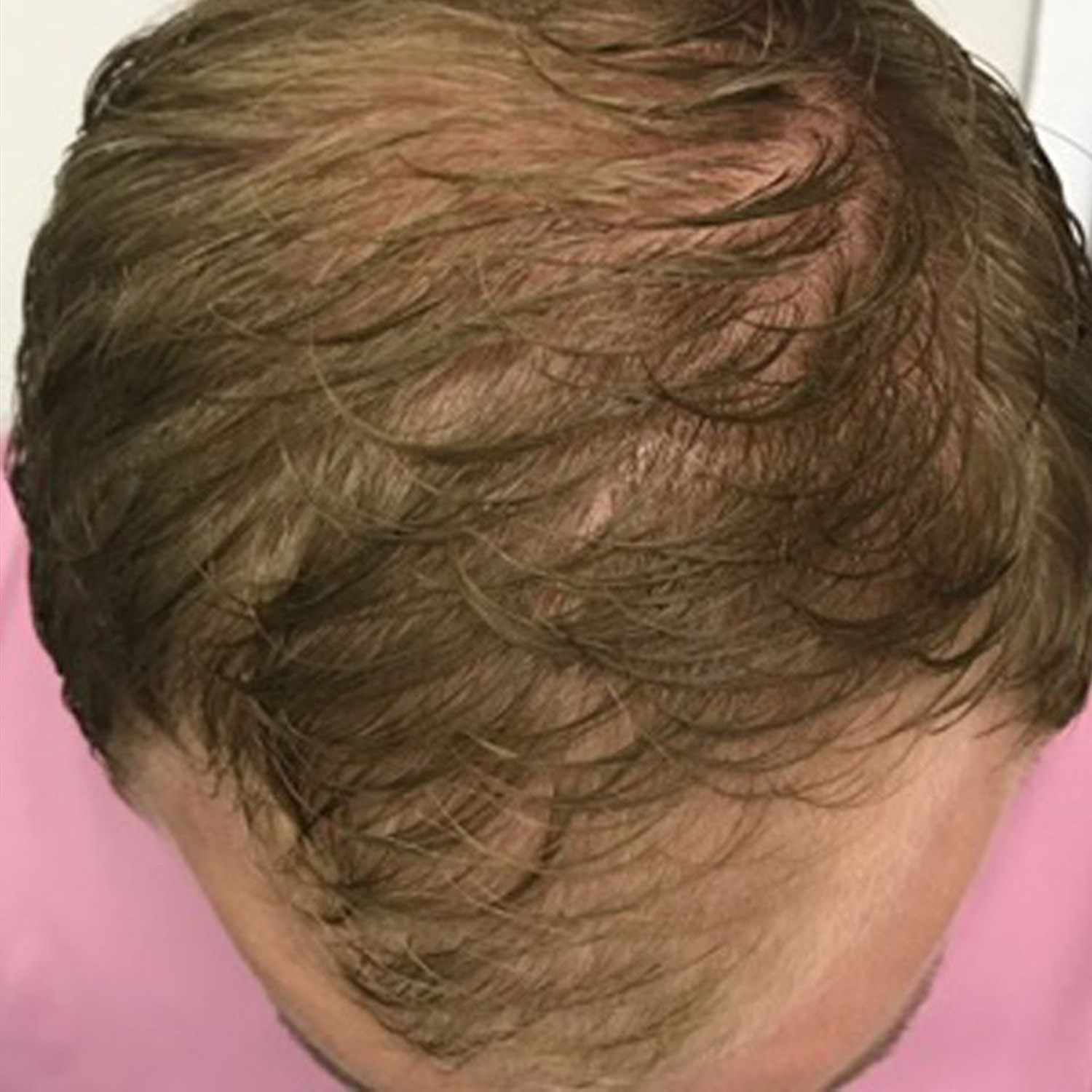Cosmetic Dermatology
Nonsurgical Hair Restoration for Dallas
- Home
- Cosmetic Dermatology
- Injectables
- Nonsurgical Hair Restoration for Dallas
Hair Loss Patients Enjoy the Regenerative Benefits of PRP
 Dr. Ellen Turner has often used platelet-rich plasma at her practice to improve the look of patients’ skin and complement other treatments, such as microneedling. The treatment that puts the most powerful parts of a patient’s own blood to work is growing in popularity—as well as in its application—throughout the country. Because of its effectiveness and natural results, Dr. Turner also offers platelet-rich plasma (PRP) therapy for something that can bring hope to millions of sufferers around the United States: nonsurgical hair restoration. Dallas men and women facing the burden of thinning hair or balding can now reverse the frustrating progression without the need for surgery or medications that have unwanted side effects.
Dr. Ellen Turner has often used platelet-rich plasma at her practice to improve the look of patients’ skin and complement other treatments, such as microneedling. The treatment that puts the most powerful parts of a patient’s own blood to work is growing in popularity—as well as in its application—throughout the country. Because of its effectiveness and natural results, Dr. Turner also offers platelet-rich plasma (PRP) therapy for something that can bring hope to millions of sufferers around the United States: nonsurgical hair restoration. Dallas men and women facing the burden of thinning hair or balding can now reverse the frustrating progression without the need for surgery or medications that have unwanted side effects.
Nonsurgical hair restoration works specifically for patients who have lost hair due to something known as androgenic alopecia—the most frequent cause of hair loss in men. The hereditary condition is frequently referred to as male-pattern baldness, though it impacts women, too. PRP, injected into the scalp during nonsurgical hair restoration, can stimulate follicles pushed into dormancy by androgenic alopecia, bringing new life— and new hair—to the scalp.
Cosmetic Dermatology
Contact Dr. Ellen Turner's office about requesting an appointment or call (214) 373-7546. Find out more about nonsurgical hair restoration in the Dallas area today!
What Are the Causes of Hair Loss?
Experiencing significant hair loss, watching a growing bald patch, or even discovering thinning hair for the first time can be distressing for most people, with the realization negatively impacting their overall quality of life. Many men and women choose over-the-counter drugs and topical creams, though these options aren’t the most effective at increasing hair growth. Fortunately, there are other, more reliable nonsurgical hair restoration alternatives.
Nonsurgical hair restoration with PRP is a modern technique that can help the millions of men and women affected by hair loss feel more confident. But before we explain more about nonsurgical hair restoration, it makes sense to examine the primary reasons why some men and women experience thinning hair.
In addition to androgenic alopecia, there are wide range of contributors to hair loss. A nutrient deficiency may be one of the reasons your hair is falling out. In some cases, this may be because you aren’t consuming enough protein, zinc, or iron in your diet. In other cases, hair loss may be the result of a disorder, disease, hormonal changes, weight loss, or stress. Dr. Turner offers wellness and function medicine testing that can investigate the cause of the hair loss, and provides nutrition education and supplementation for best treatment outcomes.
Many people lose hair every day as part of the life cycle of a follicle and do not require nonsurgical hair restoration. This natural process can be altered by hormones and other changes in body chemistry, whether the shifts are due to pregnancy, illness, supplements, aging, genetics, or something else. In some cases, increased hair loss tapers off over time as body systems come back into balance. Skin diseases can also cause hair to fall out, and may require specific treatment, which would likely result in new hair growth once cleared up. Certain hair products can cause hair to become damaged or break.
Anyone considering nonsurgical hair restoration should know that androgenic alopecia is different from the other causes mentioned here. Because the trigger for the loss is genetic, the hairs fall out over time in a generally predictable way. Women tend to experience overall thinning that becomes increasingly noticeable, while men typically watch as their hairline recedes and a bald spot appears and grows larger on the crown of their head.
What Is the PRP Used in Nonsurgical Hair Restoration?
Platelets are small, solid components in the blood, which are essential for blood clotting, healing injuries, and supporting the regeneration of tissues. They are full of growth factors: proteins that accelerate the wound healing process. The platelet-rich plasma therapy used in nonsurgical hair restoration was developed over a decade ago and is now utilized in a variety of medical applications.
The PRP method for nonsurgical hair restoration involves first drawing a sample of blood, which is then spun in a machine known as a centrifuge to isolate the platelets from other constituents.
For nonsurgical hair restoration, this injectable plasma mixture, which contains a high concentration of platelets, is reinjected into the hair follicles. The session typically lasts no more than 10 minutes, and patients may begin to notice increased thickness and regrowth a few months after their treatment.
Who Is A Good Candidate for Nonsurgical Hair Restoration?
Nonsurgical hair restoration isn’t the right choice for everyone. There are many reasons people lose their hair, so there are many solutions, ranging from medications to transplants. These range in effectiveness and also depend on the cause of the hair loss. If a change in diet is the cause, a change back will likely be the solution.
For this reason, it is important to consult with a dermatologist experienced in skin and hair problems in order to get a proper diagnosis before deciding on whether nonsurgical hair restoration is the best course of action. Dr. Turner may perform blood tests or a biopsy of the scalp to help determine the causes of the problem and whether you’re a good candidate for nonsurgical hair restoration. PRP injections for nonsurgical hair restoration often have high success rates for patients dealing with androgenic alopecia.
How Does Nonsurgical Hair Restoration Work?
One popular solution to the problem of hair loss involves taking a hair restoration medication that works, but has side effects many patients feel are undesirable. Another solution requires the physical collection of healthy hair follicles from other parts of the scalp, which are then implanted in the bare patches.
Patients seeking hair replacement that works, but who want to avoid the concerns of medications or the cost and recovery time associated with transplantation procedures, enjoy nonsurgical hair restoration with PRP for its ease and effectiveness. To add to that, as the platelets are naturally produced by the patient’s body, the risk of allergies from this nonsurgical hair restoration technique is low.
When healthy scalp tissue is properly stimulated, the follicles are refreshed and begin to produce hair again. Additionally, nonsurgical hair restoration with PRP helps to decrease localized inflammation around hair follicles, which is believed to be associated with hair loss. Patients experience new growth and longer, thicker hair.
*Individual results may vary
What Should I Expect from Nonsurgical Hair Restoration?
The process itself starts with Dr. Turner removing a small amount of the patient’s blood, from which she collects the platelets. Once processed, these cell fragments are used to create plasma with very high concentration levels of platelets. This plasma is injected into the skin on the scalp where follicles have stopped producing hair.
This entire nonsurgical hair restoration process is relatively quick, and it requires no incisions or related recovery time. There are some aftercare instructions that need to be followed, but more details can be covered at the time of a hair restoration consultation, when Dr. Turner will determine if this treatment is right for you.
The initial nonsurgical hair restoration phase requires four treatments spaced four weeks apart. After that, the patient typically moves into the maintenance phase, which consists of one treatment every six months. It is important to understand that several treatments spaced close together are required to get the cells communicating between the bulb and the bulge.



